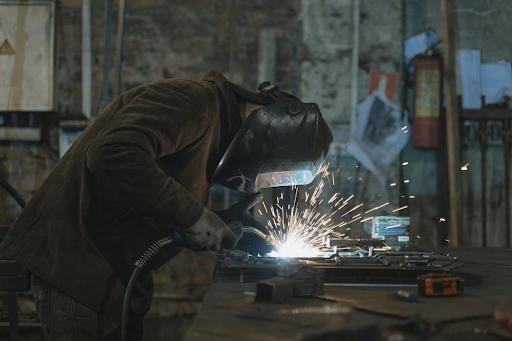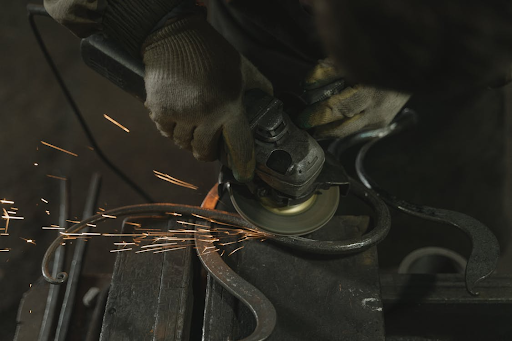We often admire how a raw piece of metal can be transformed into a sleek, functional design. Behind the scenes, the process is one of precision, focus, and intention. The same principles can be applied to the way we shape our homes and workspaces. By trimming what is unnecessary and highlighting what matters, we create clarity in both function and style.
In fabrication, machines cut with accuracy and consistency. This method offers a good reminder that efficiency comes from planning and precision. Just as custom metal fabrication ensures every edge and angle fits into a bigger design, we can apply similar strategies when sorting through clutter. The goal is not just to make things look neat but to help spaces work smarter for us.
Thinking Like a Designer
Fabrication begins with design. A blueprint or CAD model guides every cut and bend, ensuring the end result has purpose. In the same way, organising a home office or desk should start with a plan. Instead of diving into drawers without direction, think about what you use daily and what can be stored elsewhere.
When we approach tidying with a design mindset, it becomes easier to visualise the end result. You can picture a clear desk, quick access to essential tools, and fewer distractions. The key is to create systems that match your lifestyle, not force yourself into setups that look good but don’t work in practice.
Cutting Away the Excess
Laser cutting removes what is unnecessary from a sheet, leaving only the piece that serves a function. Decluttering works the same way. By cutting away what no longer serves you, you reveal the essentials.
A simple method is to ask: “Do I use this daily, weekly, or hardly ever?” Items that fall into the last category often just take up space. Files can be scanned and saved digitally, stationery can be simplified, and décor can be kept minimal for focus.
This doesn’t mean your desk needs to be bare. Instead, it means being intentional. Every object should earn its place.
Streamlining Digital Clutter
Fabrication isn’t just about the physical. Digital files are also part of efficiency in modern workshops. In the same spirit, our desktops and cloud storage deserve attention.
A messy desktop full of icons can slow you down. Taking ten minutes to create clear folders and remove outdated files makes a noticeable difference. Emails can also be streamlined by creating rules or filters to sort messages as they arrive.
Think of this as digital trimming. Just as a CNC machine removes slivers of excess metal, small actions in your digital space help keep focus sharp.
Building Systems That Last
Fabricated parts are designed to endure. In our own spaces, systems are only useful if they last beyond the first tidy-up. The aim is to prevent clutter from piling up again.
A few easy systems to consider:
- A small “inbox” tray for papers that need action, cleared once a week.
- A set time each Friday to sort digital files before signing off.
- A daily reset of your desk so it’s ready for a fresh start the next morning.
These routines are like the regular checks in manufacturing that keep machinery running smoothly. They don’t take much time but have a big impact.
Flexibility and Flow
In fabrication, bending and shaping allow a flat sheet to take on new purpose. At home, flexibility ensures our systems adapt to our changing needs. Maybe your work has shifted to more digital tasks and you no longer need space for bulky binders. Perhaps you’ve started a creative project and need easy access to materials.
Reassess every few months. Ask yourself if your current setup still supports your goals. Just as a workshop adjusts to new projects, your home office should flow with your lifestyle.
The Aesthetic of Order
Precision in fabrication isn’t just functional. It’s beautiful. Clean edges, balanced shapes, and polished finishes show the value of order. In your home, a tidy desk carries the same appeal.
When you sit at a clear surface, you’re less distracted and more motivated. The visual calm supports mental focus. Like a finished component ready to be part of a larger structure, your workspace becomes a stable base for the tasks ahead.
Finding Balance
Efficiency doesn’t mean perfection. In metalwork, a margin of tolerance is accepted because nothing is flawless. Your home or office will always collect bits of clutter. The aim is not to eliminate it completely but to keep it within manageable limits.
If your desk feels usable and not overwhelming, you’ve succeeded. Progress matters more than a picture-perfect image.
Conclusion
The lessons of fabrication—planning, precision, cutting, and flexibility—offer a fresh way to look at organisation. By trimming away the excess, streamlining both physical and digital clutter, and building systems that last, we create a space that supports us rather than drains us.
Whether it’s a workshop turning sheets into components or a desk cleared for focus, efficiency and intention bring clarity. The result is not just neatness, but the freedom to focus on what matters most.


